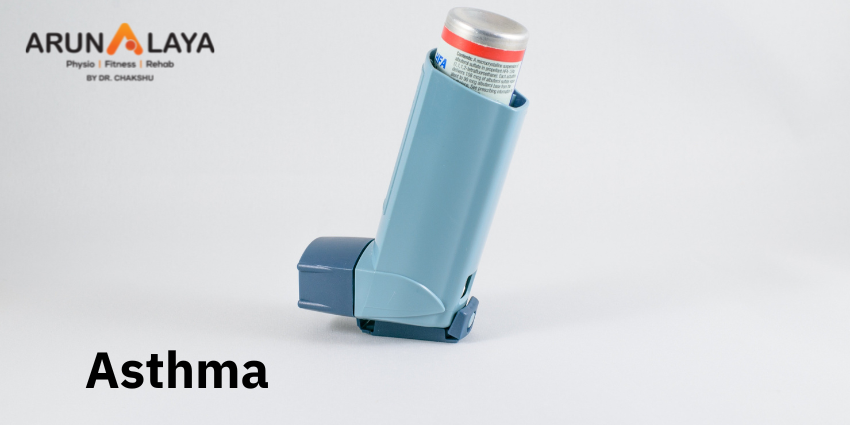How Physio can Help with Asthma?
Asthma is a long term condition affecting children and adults. The air passage in the lungs
becomes narrow due to inflammation and tightening of the muscles around the small airways.
This causes asthma symptoms: cough, wheeze, shortness of breath and chest tightness. These
symptoms are intermittent and are often worse at night or during exercise. Other common
“triggers” can make asthma symptoms worse. Triggers vary from person to person, but can
include viral infections (colds), dust, smoke, fumes, changes in the weather, grass and tree
pollen, animal fur and feathers, strong soaps, and perfume.
Symptoms of asthma
1) Coughing at night, laughing or during exercise.
2) tightness in the chest
3) shortness of breath
4) difficulty talking
5) anxiety and panicking
6) fatigue, chest pain
7) rapid breathing
8) sleep interruptions
9)confusion
10)dizziness, pale lips and fingernails
Triggers include:
Respiratory infections, exercise, allergens, pests, enviornmental irritants, intense emotions,
extreme weather conditions.
Diagnosing asthma:
Pulmonary function test confirms the asthma. This can detect the stenosis in the lumen of
airways. Asthma is usually suspected by a healthcare provider based on a pattern of symptoms
and response to medicine called a bronchodilator that can releif the squeezing of the muscles
around the airways. Blood test to check for increased levels of eosinophils and immunoglobulin
E .
Management of asthma:
1) Bronchodilators that relax muscles around the airways.
2) Antibiotics to fight for any bacterial pneumonia and bronchitis.
3) Anti- inflammatory medications such as inhaled corticosteroids for long term, and oral
steroids for acute attacks
PHYSIOTHERAPY MANAGEMENT
Main aim of physiotherapy management will be to ease breathing and remove lung secretions
through chest physiotherapy.
Instructions are given from the respiratory therapist to how to cope up with the dyspnoea.
1) Decreasing breaths taken ( reducing respiratory flow).
2) taking smaller breaths ( reducing tidal volume)
3) Deep breathing ( diaphragmatic breathing through use of abdominal muscles and lower
throacic chest movements).
4) pursed lip breathing . Deep inhale from nose and exhaling through mouth like blowing air out.
5) relaxation plays vital role in managing asthma attacks. Sitting in semi flexed position keeping
4 to 5 pillows on the back for support will ease breathing .
6) deep breathing techniques. Inhale deep for 4 sec hold for 5 sec and blow out through mouth
slowly in 6 sec.
7) removal of secretions is very important as it triggers cough. Removal of chest secretions
through
a) percussions ( frequency should be more than intensity, intensity should be extreme low in
osteoporotic patients, or use vibrators in such patients)
b) shaking
c) vibrations
d) postural drainage
e) FET by huff cough.
8) Range of motion exercises for bed ridden patients to avoid any contractures.
9) Educate the patient about use of bronchodilators and breathing exercises.
10) correct posture in standing and sitting which will assist in the management of asthma
attacks by allowing the chest to expand appropriately and lungs to function optimally.
INSPIRATORY MUSCLES TRAINING: it can be trained for both strength and endurance
with an external resistive device. Exercise induced bronchoconstriction as well as chronic
bronchoconstriction in asthmatics is associated with increased inspiratory muscle work. It is
reasonable to suggest that increasing the strength of the inspiratory muscles in people with
asthma may reduce the intensity of dyspnea and improves exercise tolerance.
Breathing exercises, inspiratory muscle training, physical training and airway clearence are the
most relevant treatment options for asthmatic patients.

